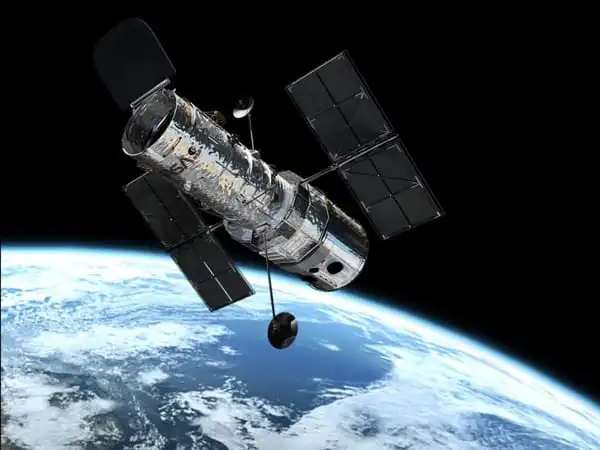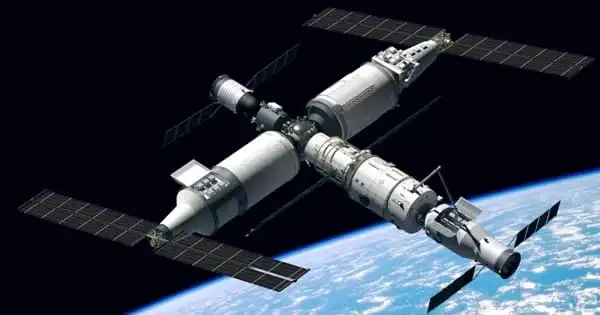China intends to launch its first large space telescope in late 2023 to survey the skies, provide new information about distant galaxies, and solve the mysteries of dark matter and dark energy.
The Chinese Space Station Telescope (CSST) is an optical and ultraviolet space observatory with a lens 6.6 feet (2 meters) in diameter, comparable to the venerable Hubble Space Telescope. Though the resolution of China’s telescope will be comparable to that of Hubble, the CSST’s field of view will be 350 times larger, according to a statement from Liu Jifeng, deputy director of China’s National Astronomical Observatories.
According to documents from a group within the Chinese Academy of Sciences, the CSST will be able to observe much larger expanses of the sky at a time than the 32-year-old Hubble, and will survey 40 percent of the sky with its 2.5 billion-pixel camera during the planned 10-year mission lifetime.
Meanwhile, NASA has launched its own Hubble successor, the James Webb Space Telescope, which has a primary mirror diameter of 21.3 feet (6.5 m). The CSST will be outfitted with four additional instruments for mapping star-forming regions of the Milky Way, detecting fast-moving objects like comets and asteroids, studying supermassive black holes, and directly imaging exoplanets.
The CSST will be able to observe much larger expanses of the sky at a time than the 32-year-old Hubble, and will survey 40 percent of the sky with its 2.5 billion-pixel camera during the planned 10-year mission lifetime.
Chinese Academy of Sciences
Blue Origin, Jeff Bezos’ company, will postpone its next suborbital space flight due to vehicle issues. This was supposed to be the New Shepard spacecraft’s fifth manned flight. “During our final vehicle inspections, we discovered that one of New Shepard’s backup systems did not meet our performance expectations. Please stay tuned for further updates,” the company said.
The telescope is also known as a “Xuntian,” which translates as “sky surveyor.” It will be in a similar orbit to the country’s Tiangong space station, allowing the telescope to dock with it for repairs, maintenance, and upgrades.
China intends to finish Tiangong by the end of this year, paving the way for the space telescope’s launch a year later.

The Voyager 1 mission support team ran into a mystery. The spacecraft in interstellar space is operating normally, receiving signals from Earth and transmitting scientific data collected by its instruments. At the same time, its orientation control system (AACS) has recently begun transmitting “junk” telemetry that has nothing to do with what is going on on board the probe.
SpaceX, Blue Origin, and a slew of other private companies contributed to 2021 being the year with the most space launches in history, but scientists warn that this mad dash to space may be wreaking havoc on our atmosphere. According to a new study, rocket exhaust can have a “significant cumulative effect” on the atmosphere, climate, and human health. The researchers discovered that the production of nitrogen oxides (NOx), which comprise the exhaust gases, can continue at high altitudes.
In a 2021 conference presentation, mission Principal Investigator Yuan Weimin of the National Astronomical Observatories (NAOC) stated that the probe could potentially detect up to one hundred TDEs per year. The probe’s surveying of the sky for transient X-ray events the probe could also provide insight into other phenomena including black holes, magentars, active galactic nuclei, red shifted gamma-ray bursts, and the interactions between comets and solar wind ions.
The mission will make use of the Beidou navigation satellite constellation to allow for the rapid transmission of alert data to the ground. Alerts will be made public in order for other teams and telescopes to conduct rapid follow-up observations. There has also been discussion about using the VHF network owned by France’s space agency, CNES.
China’s astronomers hope that their telescope, like the HST and JWST, will provide more information about the extent and distribution of dark matter. It may even provide them with more information about the dark energy that influences the expansion of the Universe. CSST will be an inspiration, just as HST and other telescopes have been. Its creators hope that it will teach future generations of Chinese scientists how to explore the cosmos.





